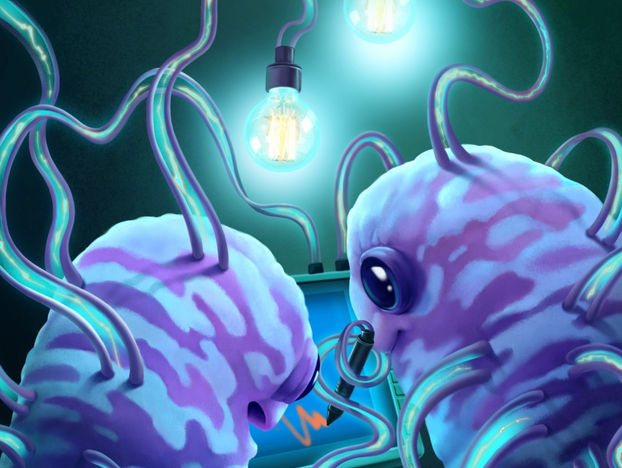An ultra-stable protein nanowire made by bacteria provides clues to combating climate change
Accelerated climate change is a major and acute threat to life on Earth. Rising temperatures are caused atmospheric methane which is 30-times more potent than CO2 at trapping heat. microbes are responsible for generating half of this methane and elevated temperatures are also accelerating microbial growth and thus producing more greenhouse gases than can be used by plants, thus weakening the earth’s ability to function as a carbon sink and further raising the global temperature.

“Nanowires” produced by Geobacter in response to an electric field applied to electricity-producing biofilms. These nanowires are composed of cytochrome OmcZ and show 1000-fold higher conductivity and 3-times higher stiffness than the nanowires of cytochrome OmcS important in natural environments, allowing bacteria to transport electrons over 100-times their size.
Sibel Ebru Yalcin. Design: Ella Maru Studio
A potential solution to this vicious circle could be another kind of microbes that eat up to 80% of methane flux from ocean sediments that protects the Earth. How microbes serve as both the biggest producers as well as consumers of methane has remained a mystery because they are very difficult to study in the laboratory. In Nature Microbiology, surprising wire-like properties of a protein highly similar to the protein used by methane-eating microbes, is reported by Yale team led by Yangqi Gu, and Nikhil Malvankar, of Molecular Biophysics and Biochemistry at Microbial Sciences Institute.
The team had previously shown that this protein nanowire shows the highest conductivity known to date, allowing generation of highest electric power by any bacteria. But to date, no one had discovered how bacteria make them and why they show such extremely high conductivity.
Using cryo-electron microscopy, Yangqi and the team were able to see the nanowire’s atomic structure and discover that hemes packed closely to move electrons very fast with ultra-high stability. It also explains how these bacteria can survive without oxygen-like membrane-ingestible molecules and form communities that can send electrons over 100-times bacterial size. Yangqi and the team also built nanowires synthetically to explain how bacteria make nanowires on demand.
“We are using these heme wires to generate electricity and to combat climate change by understanding how methane-eating microbes use similar heme wires” Malvankar said.
Original publication
Other news from the department science

Get the chemical industry in your inbox
By submitting this form you agree that LUMITOS AG will send you the newsletter(s) selected above by email. Your data will not be passed on to third parties. Your data will be stored and processed in accordance with our data protection regulations. LUMITOS may contact you by email for the purpose of advertising or market and opinion surveys. You can revoke your consent at any time without giving reasons to LUMITOS AG, Ernst-Augustin-Str. 2, 12489 Berlin, Germany or by e-mail at revoke@lumitos.com with effect for the future. In addition, each email contains a link to unsubscribe from the corresponding newsletter.



















































